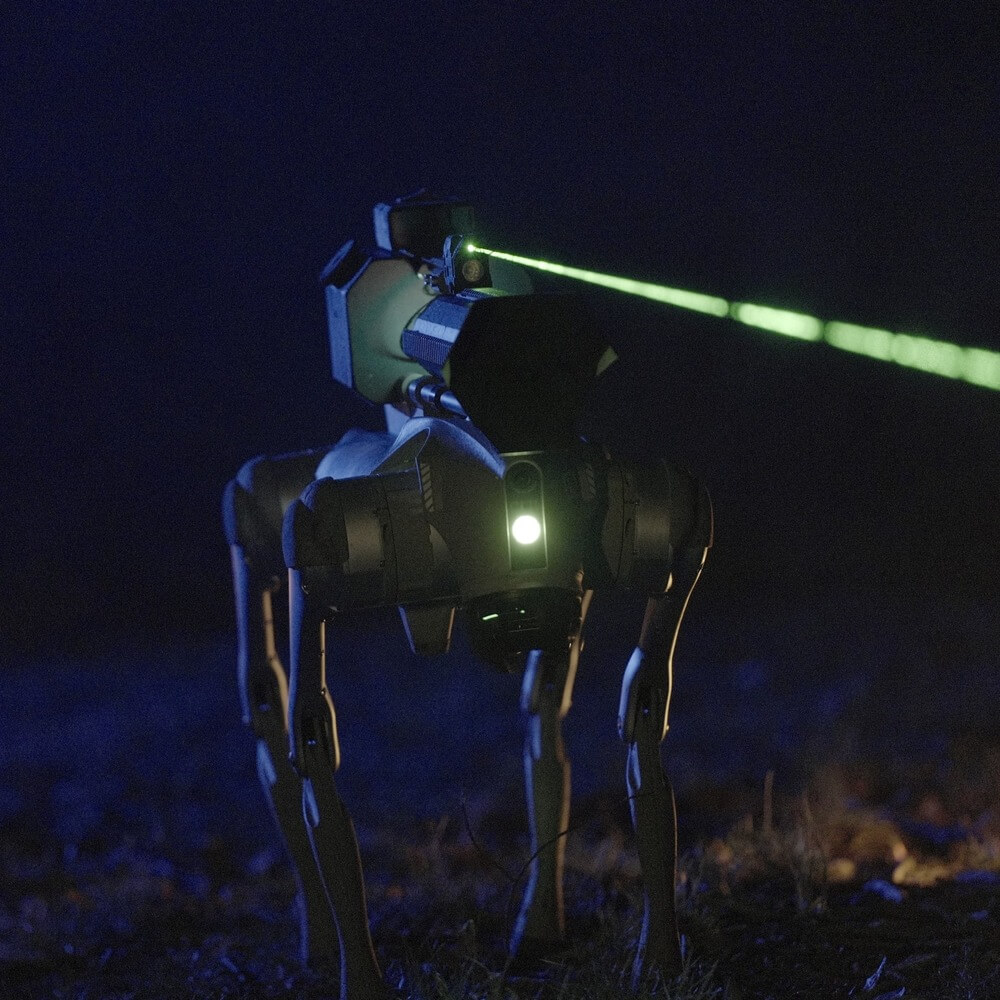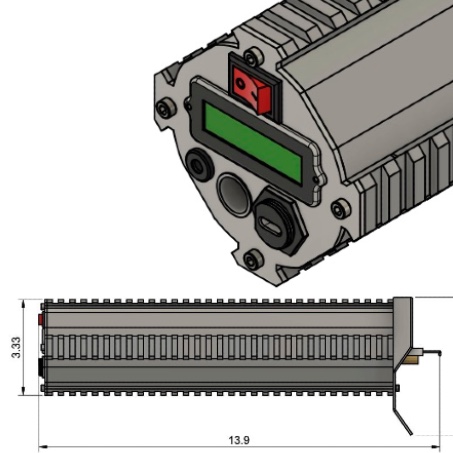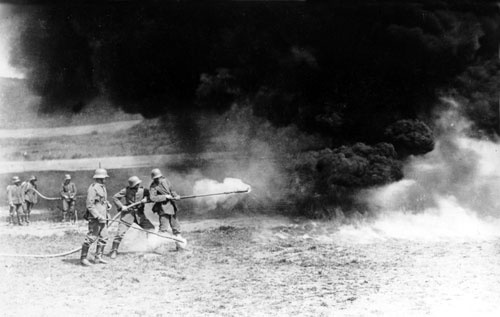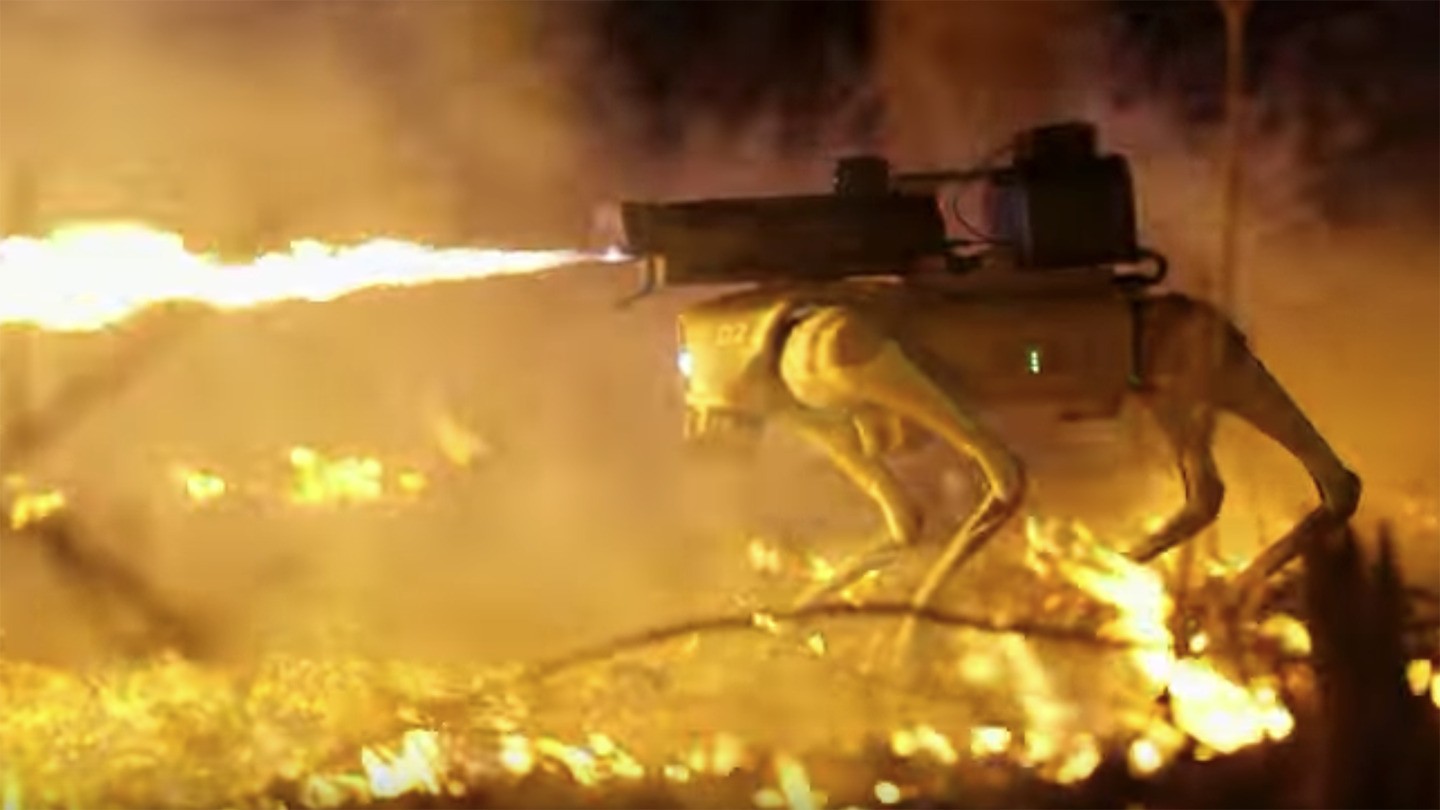What walks on four legs and can burn you to a crisp?
Thermonator, which its Ohio-based manufacturer Throwflame claims is “the first-ever flamethrower-wielding robot dog.”

Armed with the Throwflame’s ARC Flamethrower, Thermonator is able to remotely shoot a 30-foot-long stream of fire and is available to purchase for $9,420, the company says on its website.
Thermonator is able to “deliver on-demand fire anywhere!” boasts Throwflame, which says it is the oldest flamethrower maker in the United States.
The system is operated by a First Person View controller, a popular drone control concept that has gained notoriety in Ukraine guiding deadly drones from both sides onto targets.

The flame is aimed by a laser mounted on the flamethrower unit.

The robodog itself is guided by Light Detection and Ranging, or LIDAR, a low-power, eye-safe laser technology which measures light reflected from short pulses to quickly and accurately make 3D maps of an environment. Such systems are used for surveying and even in some self-driving cars. LIDAR has become popular for drones that are meant to operate in dense environments, especially urban ones.
The ARC flamethrower is attached to the robodog via Picatinny rails found on firearms to attach scopes, lasers, bipods, and other accessories.

According to Throwflame’s literature, Thermonator can be used for a variety of purposes, including wildfire control and prevention, agriculture management, conservation, snow and ice removal, as well as for entertainment and special effects purposes.
A flamethrowing robodog, however, also has potentially far less benign applications.
Flamethrowers have been used as weapons since the German army began fielding them in 1911. They were used to devastating effect in ensuing conflicts to burn out enemy positions like pill boxes and other hardened targets, as well as to clear trenches, and spark fear.

The war in Ukraine has shown the value of uncrewed weapons systems, ranging from aerial and surface drones, with small uncrewed ground vehicles becoming popular as of late, especially explosive-laden types. The ability to hit the enemy without risking troops has gained tremendous practical applications as Russia’s all-out invasion grinds on. Something like the Thermonator could have great appeal, especially if it had more robust autonomous capabilities. Dealing with these rushing into trenches could be a terrifying affair.
Using robodogs as weapons delivery systems is not a new concept.
As we reported last year, the U.S. Marine Corps already explored using robodogs as weapons, mounting a training version of the M72 infantry anti-armor rocket launcher on one of the four-legged automatons. Such weapon systems are gaining increasing interest not just from U.S. armed forces — the Chinese and Russian militaries are also exploring arming four-legged uncrewed ground systems. The Marine design bears a striking resemblance to a Chinese-made commercial-of-the-shelf quadrupedal robot that has emerged in anti-armor rocket launcher and submachine gun-armed configurations in Russia in the past.

Overall, more ‘military grade’ robodogs are serving in many roles with the U.S. military today, with these applications only set to grow in the future as their capabilities increase, especially in terms of autonomy. You can read more about what these systems are currently capable of in this past report.
We asked Throwflame if they have had any contact with the U.S. or any other military about Thermonator and will update this story should they respond. However, their website does acknowledge that there is a likely military use for this system.
“Need a Wolfpack? Send us an email and ask about our bulk discounts!” Throwflame says on its website, above images of U.S. military service branches and a box containing information about “agency-specific procurement and International Traffic in Arms Regulations (ITAR) export controls for the Thermonator.”
Given the tough fight in Ukraine, and anticipated brutal battles in the Pacific, it likely won’t be long until Thermonator, or something like it, finds itself on a killing field somewhere.
Contact the author: howard@thewarone.com
